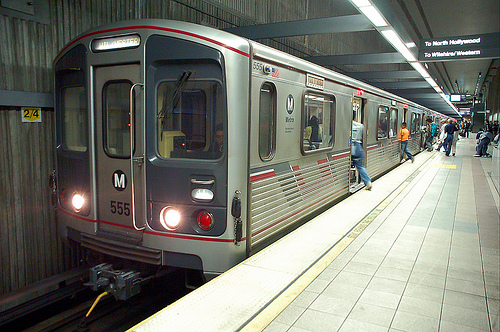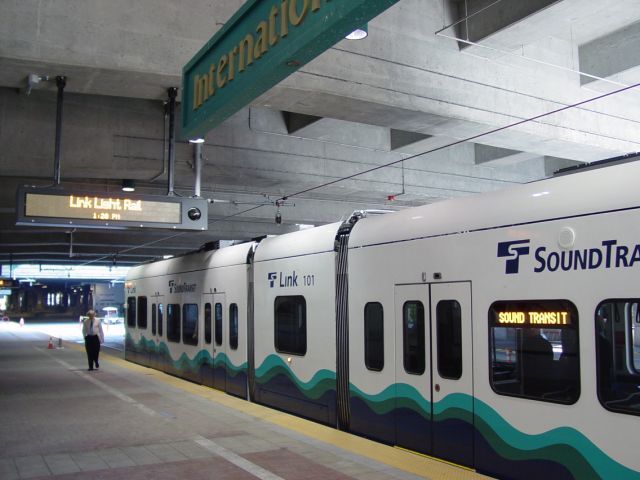A lot of wheelchair users can't or won't drive so it's nice to have some accessible way to get around when you're traveling that doesn't require you to transfer out of your chair. It's also nice for able-bodied people who just don't want to be bothered with driving while on vacation...like me, for instance.
Here are the best transit systems we've encountered on our travels, in no particular order.
London, England - While not 100% accessible, a good number of stations at key spots make the Underground a good travel option for wheelchairs. Always pay attention to the gap (the difference in height between the platform and the floor of the train), which can range from nothing up to 12 inches. The accessible tube map available at each station lists the gap of each station on the back. The London bus system is completely accessible (save for two redundant lines that use older, historic double deckers) and all taxis must be wheelchair accessible by law.
San Francisco, California - The most Eastern (in culture and vibe, anyway) of the West Coast cities, San Francisco has a pretty extensive trolley and bus system in the Muni. While all buses are accessible, only about half of the trolley stations are. The historical streetcars on Market Street are accessible but the cable cars are not. BART, the regional subway, is 100% accessible.
Los Angeles, California - Although I never thought I'd say this, our hometown has developed a pretty extensive, 100% accessible rail network over the last couple of decades. Six light rail and subway lines run across the region from Long Beach in the south, Pasadena (soon to be Azusa) in the east, North Hollywood in the north, and Culver City in the west. Several Metrolink train lines also link such far-flung locales as Oxnard, Oceanside, Lancaster, San Bernardino, and Riverside with all those other rail lines at Union Station downtown. The weak link is the bus system that, although 100% accessible, is run by over a dozen operators with different fares and policies creating much confusion.
Chicago, Illinois - The El system here, although only about 50% accessible, at least has it's accessible stations at key points such as the airports, the stadiums, and strategic locations in the Loop. It's also nice that they have heaters on the platforms for those bitterly cold Chicago winters.
Munich, Germany - An incredibly extensive subway system (U-Bahn for the city and S-Bahn for beyond) that is very close to 100% accessible and run with great German efficiency. Not much need for buses here but where they are, they are also 100% accessible. Only the older street-tram system is not...it's maybe 75% accessible.
Boston, Massachusetts - Like Chicago, the T in Boston is only about half-accessible but at least it's the key points you'll want to go to that are.
Minneapolis, Minnesota - Some cities don't have a lot of transportation but, what they do, goes just about anywhere you want to go. Such as it is with Minneapolis, with its 100% acccessible Hiawatha light rail line that runs from the home of the Twins...Target Field...in the north to the Mall of America in the south and all the great points in between.
Denver, Colorado - Six, 100% accessible light rail lines serve the mile high city. Since there's so much beer to drink here, that comes in very handy. The newest serves Golden to the west, almost to the massive Coors factory.
Seattle, Washington - A burgeoning light rail system, running from the airport to downtown, supplements a great bus system. Free fare in the downtown zone and 100% accessible.
Sacramento, California - The Capitol City's light rail system is 100% accessible and is great for exploring the sights of the fun city. We also like to use it to go the eastern terminus at Folsom for drinks and dinner at the beautifully restored Old Town. Downside is that the system shuts down early.
NOTE: Why not New York? I'd love to include the vast subway system of the Big Apple but only a very small fraction of the stations there are accessible.
Darryl
Copyright 2014 - Darryl Musick
All Rights Reserved










No comments:
Post a Comment